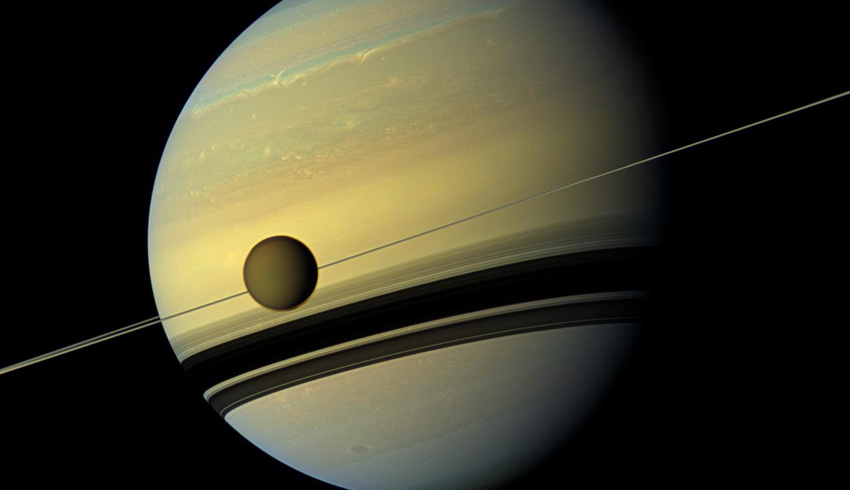Just as our own moon floats away from Earth a tiny bit more each year, other moons are doing the same with their host planets. As a moon orbits, its gravity pulls on the planet, causing a temporary bulge in the planet as it passes.
Over time, the energy created by the bulging and subsiding transfers from the planet to the moon, nudging it farther and farther out. Our moon drifts 3.8 centimetres from Earth each year.
Scientists thought they knew the rate at which the giant moon Titan is moving away from Saturn, but they recently made a surprising discovery: using data from NASA's Cassini spacecraft, they found Titan drifting 100 times faster than previously understood – about 11 centimetres per year.
Valery Lainey, lead author of the work published 8 June in Nature Astronomy, who conducted research as a scientist at NASA's Jet Propulsion Laboratory in southern California before joining the Paris Observatory at PSL University, said, "This result brings an important new piece of the puzzle for the highly debated question of the age of the Saturn system and how its moons formed."
The findings on Titan's rate of drift also provide important confirmation of a new theory that explains and predicts how planets affect their moons' orbits.
For the last 50 years, scientists have applied the same formulas to estimate how fast a moon drifts from its planet, a rate that can also be used to determine a moon's age.
Those formulas and the classical theories on which they're based were applied to moons large and small all over the solar system. The theories assumed that in systems such as Saturn's, with dozens of moons, the outer moons like Titan migrated outward more slowly than moons closer in because they are farther from their host planet's gravity.
"The new measurements imply that these kind of planet-moon interactions can be more prominent than prior expectations and that they can apply to many systems, such as other planetary moon systems, exoplanets – those outside our solar system – and even binary star systems, where stars orbit each other," theoretical astrophysicist Jim Fuller added.
Four years ago, Fuller, now of Caltech, published research that upended those theories. Fuller's theory predicted that outer moons can migrate outward at a similar rate to inner moons because they become locked in a different kind of orbit pattern that links to the particular wobble of a planet and slings them outward.
To reach their results, the authors mapped stars in the background of Cassini images and tracked Titan's position. To confirm their findings, they compared them with an independent dataset: radio science data collected by Cassini.
During 10 close fly-bys between 2006 and 2016, the spacecraft sent radio waves to Earth. Scientists studied how the signal's frequency was changed by their interactions with their surroundings to estimate how Titan's orbit evolved.
Paolo Tortora, of Italy's University of Bologna, is a member of the Cassini Radio Science team and worked on the research with the support of the Italian Space Agency. He added, "By using two completely different datasets, we obtained results that are in full agreement, and also in agreement with Jim Fuller's theory, which predicted a much faster migration of Titan."
Managed by JPL, Cassini was an orbiter that observed Saturn for more than 13 years before exhausting its fuel supply. The mission plunged it into the planet's atmosphere in September 2017, in part to protect its moon Enceladus, which Cassini discovered might hold conditions suitable for life.
The Cassini-Huygens mission is a co-operative project of NASA, ESA (the European Space Agency) and the Italian Space Agency. JPL, a division of Caltech in Pasadena, manages the mission for NASA's Science Mission Directorate in Washington. JPL designed, developed and assembled the Cassini orbiter.

